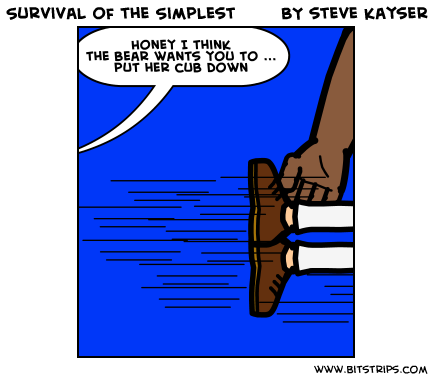DANGER
When death, danger or the IRS beckons, life gets real simple, real quick. Every sense amplifies. Every second lasts a year. All attention finely focuses. Yes? It’s because of this universal principle…
Someone throws a rock at your head. Is there a long thought process? No. It’s instinctive, intuitive. Our brains are genetically hard-wired to focus only on the data that’s important for survival. All else is tossed out. Things get real simple, real quick.
“Fix gaze on rock, if it keeps coming, duck!”
That’s called a “gaze heuristic,“ an evolutionary shortcut that evolved over millions of years. It saves the brain from making a Gabazillion (That’s “gabazillion with a capital “G,”) mathematical calculations. Your brain gives you one quick, practical, rule-of-thumb to act on to save you from getting a rock headache or giving you an all expenses paid trip down the river Lethe.
Why is This Important – Besides Being a Handy-Dandy Life-Saving Trick?
Bill Schley, author of the bestselling “Why Johnny Can’t Brand,” has a book called, “The Micro-Script Rules: It’s Not What People Hear … It’s What They Repeat.” Bill’s book taps our brain’s built-in heuristics, or problem-solving rules-of-thumb, to help you craftily break through and powerfully communicate ideas, so people won’t just hear them … they’ll repeat them. Bill details how five finely conceived, crafted and connected words can be more powerful than 5,000.
Message Madness
Sounds easy. I mean, it’s an evolutionary thing, right? Well, easy it’s not. How do you standout and breakthrough in today’s world where Google indexes over 1.5 trillion URL’s? Where 300 billion messages bombard us — per second? And they’re just not messages. On the whole, they’re pretty crappy messages — no?
Most are loaded with self-serving corporate gobbledygook that habitually over-delivers less than zero value. Too much information. Too many words. We’re fighting an exploding global pandemic of message madness where memorability is memorably absent.
Message madness disease only affects us humans – mostly writers and business communicators. “The Micro-Script Rules” can help you take the madness out of your message and put meaning into the madness of 1.5 trillion URLS and 300 billion messages per second.
So What Are Micro-Scripts?
Micro-scripts are magic words and phrases that kick gluteus-maximus in any battle of ideas. Simple. Clear. Repeatable. Memorable. Easy to instantly memorize. Short. Did I say Short?
Let me say it again. Short. Usually 3-8 words. Micro-Scripts work because people love to repeat them as much as hear them. And if they repeat them … they’re spreading your idea or promoting your business for you.
What They’re Not
Sound bites.
What They Are
Idea-bites. That’s right, idea bites that deliver value and message memorability. Here’s a couple. Can you finish them?
Examples:
If it does not fit, you must ____
Pork, it’s the other ____
Friends don’t let friends _____
1,000 songs in your _____
What happens in Vegas _____
What happens in Cincinnati _____ (Answer at end of article … guess right and receive a complimentary copy of “THE MICROS-SCRIPT RULES.”)
The milk chocolate that melts ______
Dr. Scholls Shoes … are you _____?
Why Do They Work?
According to Bill, “Cognitive psychologists say that people love micro-scripts because our brains love to simplify, and we love communicators who help us simplify. We evolved this way for survival. We zip up whole stories and impressions into compact files and make short “rules of thumb’’ for quick retrieval at the moment of need.
In today’s world, stories are more important than ever, but you need to know how to tell your story in about one line or less. The right five words will always beat 5,000. Marketers will tell you this is a big reason we like brands so much. They help us simplify, too.”
How to Create Micro-Scripts?
You can’t template the process to create a Micro-Script, but ideas, patterns and similarities emerge. According to Bill, “The pattern we most often see is a simple, two-part logic equation – a kind of balance where value A is related to value B to form a complete idea. For example,
Problem A has Solution B
If A, then B – “What goes around, comes around.”
A causes B – “No pain, no gain.”
A saves B – “Better safe than sorry.”
A mirrors B – ‘If guns are outlawed, only outlaws will have guns.”
And the single, big metaphor version…
A is B
“Laughter is the best medicine.”
“Honesty is the best policy.”
“Love is blind.”
5.2 Words
Bill’s research also revealed that the most memorable lines of all-time delivered powerful and moving ideas in an average of 5.2 words – 5.2 words.
Can you imagine?
What are we going to do with all the spare words we know?
###
The answer to Cincinnati question? If you know, let me know. I think it’s “nothing.” But… I’m not sure.



